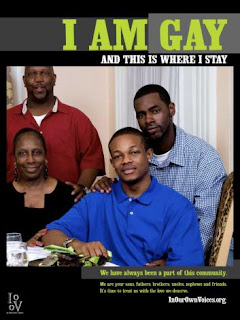I took a break from writing last week, partly because of Labor day and partially because I've just been so uninspired by a lot of the stuff I've seen. I wasn't really sure what was driving my boredom, and the seeming deluge of uninteresting work, but a new acquaintance of mine at NYCON, pointed me in an interesting direction. While we were talking about the communication and marketing needs of the sector, he pointed out that often Nonprofits don't really know the difference between marketing and communications, the role of strategy, and a ton of other things that I take for granted. This confusion of terms and lack of knowledge allows people who are just graphic designers to claim that they're marketing strategist (and making executions that totally miss the mark) or for strategist to claim that they are graphic designers (and making executions that are boring and uninteresting) or all sorts of people doing all sorts of things that they frankly stink at.
With this in mind, I've attempted to put a little order to this madness by creating a framework (I know, a consultant making a framework, big surprise) but trust me, this is good:

Ok, so what are you looking at? This is essentially a virtuous cycle of marketing with 4 key phases. First there is market research, then there is strategy and tactical development, then there is material development, then constituent relationship management, and finally back to market research (which starts the whole cycle over again). The line on the bottom (the X-Axis) means that the boxes on the left tend to be more quantitative and the boxes on the right tend to be more qualitative. The line on the side (the Y-axis) means that the boxes on the top tend to need more sector specific knowledge and the boxes on the bottom use more general knowledge. Now these rules and segmentation's aren't hard and fast (life is complex and you gotta stay flexible) but they are a great way to get you lined up in the right direction. Generally you need someone with deep knowledge in strategy for market research and strategy/tactial development, you need someone who is a great designer/writer/programmer etc for material development and a great data-miner for constituent relationship management/monitoring.
I think that each of these boxes deserves talking about but I also believe that no one reads long posts, so I'm going to explain the chart in installments. This week I'm starting with the top right box: Market Research
Essentially this is about learning about your various stakeholder groups. At the beginning of this process is where you need to understand who your various stakeholders are, what they want, what they do, and why they're doing it. Knowledge about the workings of the nonprofit sector is great here because nonprofits, unlike many for-profits, often have all sorts of stakeholders (government, community members, clients, donors, relatives of clients, staff, board members, etc) and a keen understanding of the nonprofit sector is key. In this area you gotta think about not only what stakeholders you want to research but how you plan on researching them. Often since money is a factor people tend to subjectively pick important stakeholders (usually donors or clients) and then use an assortment of traditionally quantitative research tools (surveys) and qualitative tools (focus groups)* to get a sense of how their organization and their mission exists in the minds of those people that matter most to the organization. This is a key stage that often gets the short end of the stick because nonprofit-eers (even more so than those that work in for-profit) often feel that they already know their constituents inside and out (which they very often don't). It's important for people to check their egos at the door and to realize that they don't know everything (if they did they wouldn't be struggling so hard to achieve their mission and meet their goals).
In the next few installments I'll take you through the other boxes but in the mean time please feel free to post comments or send thoughts on how to make this framework better (I'm always open to new ideas).
Thinking through this framework made me think about one of my very favorite quotes and so I'm going to end with it:
“It is not enough to do your best. First you must know what to do and then do your best."- W. Edwards Deming
* on a quick side note, I actually consider focus groups fairly quantitative, despite the fact that they're normally called qualitative. As someone who has sat through hundreds of focus groups in all sorts of categories, I can say without a doubt that the vast majority of usable insights come from things that people say over and over in different groups. The thing that make insights pop in groups is the number of times you hear that insight arise. It is true that sometimes a participant in the final group will say something brilliant and the strategist behind the glass will pick it up and run with it, but those times and few and far between.












